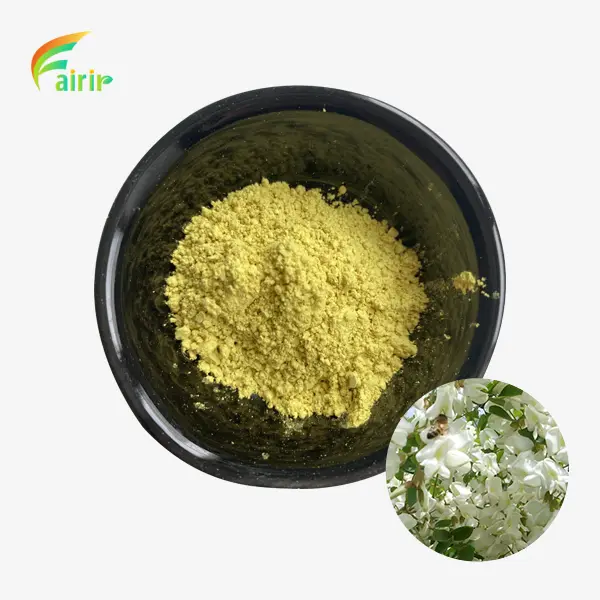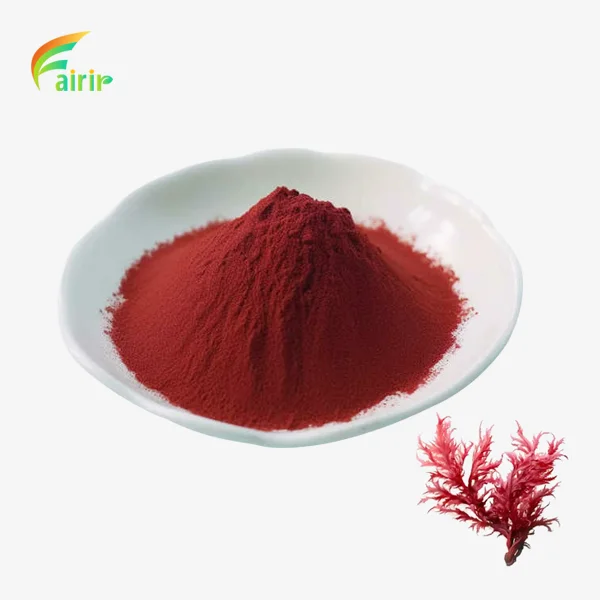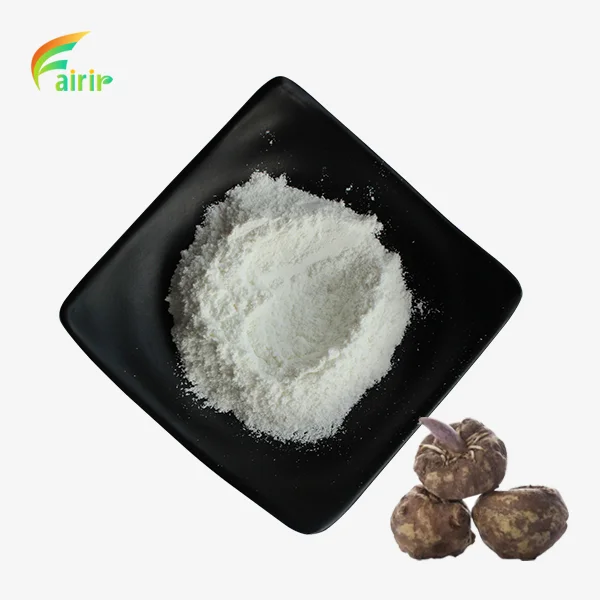Taste Profile And Masking Off-Notes Of Stevioside Powder
Stevioside powder, a natural sweetener derived from the Stevia rebaudiana plant, has gained significant attention in the food and beverage industry due to its zero-calorie profile and intense sweetness. However, one of the challenges faced by manufacturers and formulators is the unique taste profile of stevioside and the presence of off-notes that can affect the overall sensory experience of the final product. This blog post delves into the intricate taste profile of stevioside powder and explores various strategies for masking its off-notes. Understanding these aspects is crucial for product developers aiming to create palatable and consumer-friendly stevia-sweetened products. We'll examine the complex flavor characteristics of stevioside, discuss common off-notes encountered, and present innovative approaches to mitigate these challenges, ensuring a more enjoyable and balanced sweetness in various applications.

What are the key characteristics of stevioside powder's taste profile?
Sweetness intensity and onset
Stevioside powder is renowned for its high sweetness intensity, estimated to be 200-300 times sweeter than sucrose. Because of its incredible strength, recipes can use a lot less sugar. But stevioside powder doesn't start to taste sweet like sugar does. The sweetness is usually felt more slowly at first, building up over time in the mouth. This one-of-a-kind quality can change how something tastes, so it's important to think about it carefully when making products with stevioside powder. Formulators must account for this delayed onset to ensure a balanced sweetness profile throughout the consumption process, often combining stevioside with other sweeteners or flavor enhancers to achieve a more sugar-like sweetness curve.
Lingering aftertaste
One of the most notable aspects of stevioside powder's taste profile is its lingering aftertaste. Unlike sugar, which dissipates quickly, the sweetness of stevioside can persist on the palate for an extended period. This prolonged sweetness can be desirable in some applications but may be perceived as unpleasant in others. Stevioside's chemical structure and how it interacts with taste receptors are what cause the impact to last. This is something that formulators often try to fix by hiding the flavor, mixing with other sweeteners, or using taste enhancers to make the aftertaste less strong. Understanding and controlling this lasting effect is important for making products that taste good without adding any extra flavor notes that you don't want.
Bitterness and metallic notes
Despite its intense sweetness, stevioside powder can exhibit bitter and metallic off-notes that can detract from the overall taste experience. These undesirable flavor characteristics are more pronounced at higher concentrations and can vary depending on the purity of the stevioside extract. The bitterness is often described as having a licorice-like quality, while the metallic notes can impart a tinny or artificial sensation. Product makers have a hard time with these off-notes because they can drown out the tastes they want to include in a formulation. Addressing these issues requires a multifaceted approach, including careful selection of high-purity stevioside powder, strategic blending with other sweeteners, and the use of flavor masking agents to mitigate the perception of bitterness and metallic notes.
How can off-notes in stevioside powder be effectively masked?
Flavor masking techniques
Effective flavor masking is crucial when working with stevioside powder to create palatable products. One common technique is the use of natural flavor compounds that can selectively block or reduce the perception of bitter and metallic notes. For instance, certain vanilla extracts have been found to be particularly effective in masking stevioside's off-notes. Another thing that citrus flavors, like lemon or lime, can do is brighten up the general flavor profile and hide bad tastes. Using cyclodextrins is another option. These can wrap around stevioside molecules and stop them from interacting with bitter taste receptors. Formulators may also employ specific taste-modulating ingredients that work synergistically with stevioside powder to enhance sweetness perception while minimizing off-notes, resulting in a cleaner taste profile.
Blending with other sweeteners
Blending stevioside powder with other sweeteners is a widely adopted strategy to improve its overall taste profile. By combining stevioside with other natural or artificial sweeteners, formulators can create a more balanced sweetness curve and reduce the prominence of off-notes. For example, mixing stevioside with erythritol, a sugar alcohol, can result in a sweetness profile that more closely resembles sugar while maintaining a low-calorie count. Some formulators opt for a combination of stevioside with small amounts of sugar or high-intensity sweeteners like sucralose to achieve a more rounded sweetness. The bitter aftertaste and lingering aftertaste of stevioside powder can be hidden by these mixes, making the taste more appealing to customers.
Process optimization
Optimizing the process is a key part of reducing off-notes in stevioside powder uses. There are big differences in how stevioside tastes depending on how it is extracted and cleaned. Ion-exchange chromatography or membrane filtration are two advanced methods of cleaning that can help get rid of impurities that cause off-notes. Getting the pH of the end product just right can also change how bitter and harsh tastes are perceived. Some studies have shown that small changes in pH can lessen the strength of off-notes without lowering the sweetness. Furthermore, the order of ingredient addition and processing conditions during product formulation can affect the interaction between stevioside and other components, potentially mitigating off-notes. Careful consideration of these process parameters can lead to improved taste outcomes in stevioside-sweetened products.
What are the latest innovations in improving stevioside powder's taste profile?
Enzymatic modifications
Enzymatic changes made possible by recent progress in bioengineering have led to new ways of improving the taste of stevioside powder. Scientists have found certain enzymes that can change the molecular structure of stevioside. This can make chemicals that are sweeter and have fewer off-notes. In this case, UDP-glucosyltransferases have been shown to be effective at changing stevioside into rebaudioside A, which is usually thought to taste better. It is possible to fine-tune these enzymatic processes to make steviol glycoside mixtures that are exactly what an application needs. Because of these changes caused by enzymes, producers can make different kinds of stevioside powder that taste better. This could mean that more goods can use this natural sweetener.
Nanotechnology applications
Nanotechnology is becoming a strong way to fix the taste problems that come with stevioside powder. Researchers are looking into different ways to use nanoencapsulation to make stevioside-loaded nanoparticles that can control how much sweetness is released and how many off-notes are felt. It is possible to make these nanoparticles dissolve at certain rates or in response to certain conditions in the mouth. This makes the taste experience more controllable and pleasant. Nanoscale changes to stevioside molecules are also being looked into as a way to change how they interact with taste receptors and possibly make sharpness and aftertaste problems go away. Even though they are still in their early stages, these nanotechnology uses could make stevioside powder taste and smell much better in a wide range of food and drink applications.
Sensory-guided product development
Sensory-guided product development is becoming more popular as a way to improve the taste of finished goods that contain stevioside powder. To make a picture of how the tastes of foods sweetened with stevioside change over time, this method uses advanced sensory evaluation techniques such as descriptive analysis and temporal dominance of feelings. By knowing how different flavor components change over time, formulators can add ingredients that work well together or change the way the product is processed to make the taste more balanced and attractive. A lot of taste data is also being analyzed using machine learning algorithms. This helps figure out the best ways to make products so that off-notes don't stand out and the general flavor quality is improved. This data-driven approach to product development is enabling more efficient and effective solutions to the taste challenges posed by stevioside powder.
Conclusion
The taste profile and masking of off-notes in stevioside powder remain critical areas of focus for the food and beverage industry. As consumer demand for natural, low-calorie sweeteners continues to grow, innovative approaches to improving stevioside's sensory properties are essential. From advanced flavor masking techniques and strategic blending to cutting-edge enzymatic modifications and nanotechnology applications, the field is ripe with possibilities. By leveraging these advancements and adopting sensory-guided development practices, manufacturers can create more appealing stevioside-sweetened products that meet consumer expectations for taste and healthfulness.
Shaanxi Fairir Biotech Co., Ltd. is at the forefront of stevioside powder innovation, offering high-quality, sustainably sourced products to meet the evolving needs of the industry. With our state-of-the-art manufacturing facilities and commitment to research and development, we continue to push the boundaries of what's possible with natural sweeteners. For more information or to discuss your specific stevioside powder requirements, please contact us at sales@fairirbiotech.com.
FAQ
Q: What is the sweetness level of stevioside powder compared to sugar?
A: Stevioside powder is typically 200-300 times sweeter than sugar.
Q: Why does stevioside powder have a lingering aftertaste?
A: The lingering aftertaste is due to stevioside's molecular structure and its prolonged interaction with taste receptors.
Q: Can stevioside powder be used in all types of food and beverages?
A: While versatile, stevioside powder may require specific formulation adjustments for optimal taste in different applications.
Q: How can the bitterness of stevioside powder be reduced?
A: Bitterness can be reduced through flavor masking, blending with other sweeteners, and process optimization.
Q: Are there any health concerns associated with stevioside powder?
A: Stevioside powder is generally recognized as safe (GRAS) by regulatory bodies and has no known significant health concerns when used as directed.
References
1. Prakash, I., DuBois, G. E., Clos, J. F., Wilkens, K. L., & Fosdick, L. E. (2008). Development of rebiana, a natural, non-caloric sweetener. Food and Chemical Toxicology, 46(7), S75-S82.
2. Guggisberg, D., Piccinali, P., & Schreier, K. (2011). Effects of sugar substitution with Stevia, Actilight™, and Stevia combinations or Palatinose™ on rheological and sensory characteristics of low-fat and whole milk set yoghurt. International Dairy Journal, 21(9), 636-644.
3. Hellfritsch, C., Brockhoff, A., Stähler, F., Meyerhof, W., & Hofmann, T. (2012). Human psychometric and taste receptor responses to steviol glycosides. Journal of Agricultural and Food Chemistry, 60(27), 6782-6793.
4. Parpinello, G. P., Versari, A., Castellari, M., & Galassi, S. (2001). Stevioside as a replacement of sucrose in peach juice: Sensory evaluation. Journal of Sensory Studies, 16(5), 471-484.
5. Lemus-Mondaca, R., Vega-Gálvez, A., Zura-Bravo, L., & Ah-Hen, K. (2012). Stevia rebaudiana Bertoni, source of a high-potency natural sweetener: A comprehensive review on the biochemical, nutritional and functional aspects. Food Chemistry, 132(3), 1121-1132.
6. Prawitt, D., Monteilh-Zoller, M. K., Brixel, L., Spangenberg, C., Zabel, B., Fleig, A., & Penner, R. (2003). TRPM5 is a transient Ca2+-activated cation channel responding to rapid changes in [Ca2+]i. Proceedings of the National Academy of Sciences, 100(25), 15166-15171.











_1751965378790.webp)